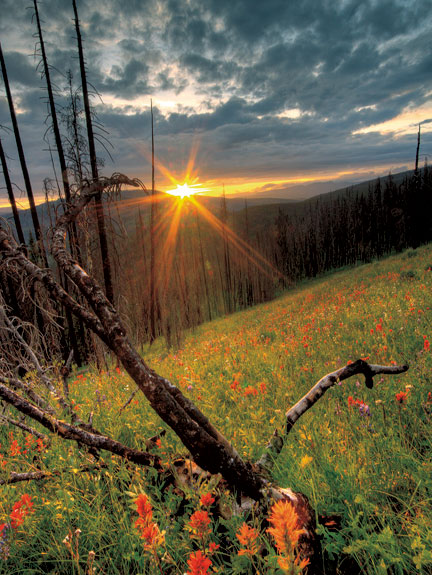Early successional forests, the stage following a major disturbance such as fire, windstorm, or harvest, have typically been viewed in terms of what is missing. Considered by the forest industry as a time of reestablishment or “stand initiation,” these early successional forests have been studied from the perspective of plant-community development and the needs of selected animals. Neither view fully grasps the diverse ecological roles of the early successional stage, argue WSU forest ecologist Mark Swanson and colleagues in a 2011 paper in the journal Frontiers in Ecology and the Environment.
Forest management throughout the twentieth century focused at first on wood production and later on conservation and development of mature, late successional forests. Early successional forests were considered as only an unfortunate intermediary stage. Such an approach ignored both ecological benefits and historic precedent. Historically, says Swanson, forests on the west side of Cascades and in cooler, wetter parts of the interior West were broken up by large disturbances. Caused by natural occurrences such as fire, storms, and volcanic eruptions, these disturbance patches would move around the landscape. Organisms that rely on early successional habitat would follow.
Instead of a continuous closed canopy across the landscape, the forest would comprise patches of rich early seral conditions interspersed with young forests and patches of old growth.
“You need that to maintain maximum forest biodiversity,” says Swanson.
“If you have an entire forest landscape in just one age class, you’ll be losing biodiversity that occurs in other age classes. You need a balance of age classes, especially at large spatial scales.”
Many species rely on early successional forest conditions.
Birds such as black-backed woodpeckers, mountain bluebirds, three-toed woodpeckers, and lazuli buntings thrive in early seral conditions.
At the national convention of the Ecological Society of America in Portland this August, Swanson reported that 8.8 percent of threatened and endangered species in Washington depend on old growth forest. While not universally accepted, neither is the figure surprising. But Swanson also found that 6.6 percent of threatened and endangered species rely on early successional forests. Furthermore, nearly half of forest-dwelling species on Washington’s list of state-level threatened, endangered, or monitored organisms use the early successional forest for at least some part of their life cycle.
In order to enhance early successional habitat following harvest, Swanson and his colleagues urge leaving some large live trees, leaving or creating snags, and leaving woody debris and some intact understory vegetation. Also, they argue against spraying brush with herbicide and rushing into replanting at high density, at least in landscapes where maintenance of biodiversity is a priority.
One of Swanson’s co-authors on the study was Jerry Franklin, a professor of forestry at the University of Washington and Swanson’s doctoral advisor. Franklin is widely known for his influential work toward understanding successional stages beyond standard timber management. He was instrumental not only in creating awareness of old-growth forest and the values it had to offer, but in greatly influencing policy and management practices. Previously, says Swanson, people tended to devalue old growth, considering it not biologically rich, mainly because it did not provide a lot of game animals. But Franklin called attention to old growth’s role in watershed protection and importance to specialist species like spotted owl and anadromous fish.
Swanson muses, “I wonder if we’re not at the stage with early [successional] forest ecosystems where we were 30 or 40 years ago with old growth in terms of really recognizing how important it is.”



